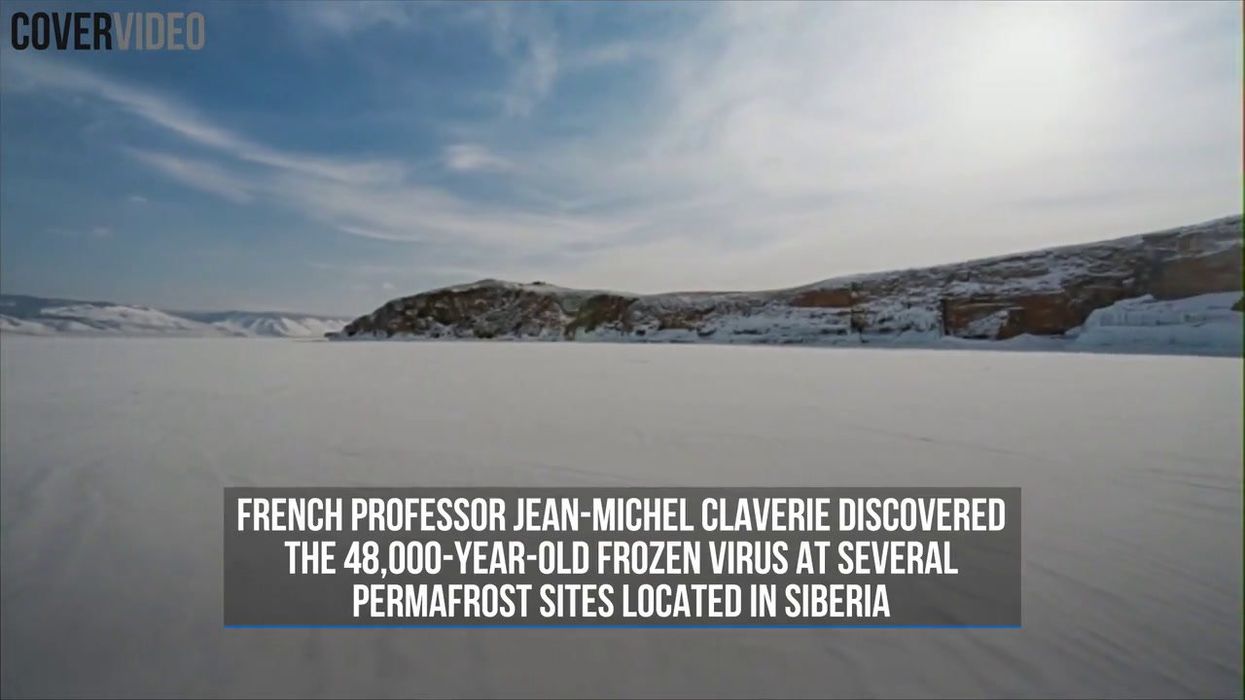Science & Tech
Sinead Butler
Jan 21, 2024
Scientists Revive 'Zombie' Virus Frozen in Permafrost for Almost 50,000 Years
Cover Media - Shareable / VideoElephant
Scientists have warned how climate change could result in ancient "zombie viruses" melting in the Arctic permafrost and potentially trigger a new pandemic.
The dormant diseases - also known as Methuselah microbes - are located in the permafrost across Canada, Siberia and Alaska and cover a fifth of the northern hemisphere.
Due to climate change causing the Arctic to warm up four times quicker than the rest of the planet, scientists who have been keeping a watchful eye on the ancient viruses are reportedly planning an Arctic monitoring network to track any early cases of a disease caused by any ancient strains.
Quarantine and expert medical treatment would also be put in place for infected people to stop the virus from spreading, The Observer reported.
“At the moment, analyses of pandemic threats focus on diseases that might emerge in southern regions and then spread north,” said Prof Claverie, of Aix-Marseille University, explained to the paper.
“By contrast, little attention has been given to an outbreak that might emerge in the far north and then travel south – and that is an oversight, I believe."
The geneticist who has been testingsamples from the permafrost added: “There are viruses up there that have the potential to infect humans and start a new disease outbreak.”
It was previously reported last year that one of the samples found was around 48,500-year-old.
Virologist Marion Koopmans Erasmus Medical Center in Rotterdam also echoed this stance to the publication: “We don’t know what viruses are lying out there in the permafrost but I think there is a real risk that there might be one capable of triggering a disease outbreak – say of an ancient form of polio.
"We have to assume that something like this could happen."
While another concern is that as the Arctic sea ice melts, there will be a rise in shipping, traffic and industrial activities in Siberia and worries have turned to humans working in the region.
"Those operations will release vast amounts of pathogens that still thrive there. Miners will walk in and breath the viruses. The effects could be calamitous," Prof Claverie said.
Koopmans also highlighted that "one of the key drivers" of outbreaks has been the change in land use and gave some historical examples.
"Nipah virus was spread by fruit bats who were driven from their habitats by humans," the virologist said.
"Similarly, monkeypox has been linked to the spread of urbanisation in Africa. And that is what we are about to witness in the Arctic: a complete change in land use, and that could be dangerous, as we have seen elsewhere.”
"The scenario of an unknown virus once infecting a Neanderthal coming back at us, although unlikely, has become a real possibility," Prof Claverie added.
How to join the indy100's free WhatsApp channel
Sign up to our free Indy100 weekly newsletter
Have your say in our news democracy. Click the upvote icon at the top of the page to help raise this article through the indy100 rankings.
Top 100
The Conversation (0)














